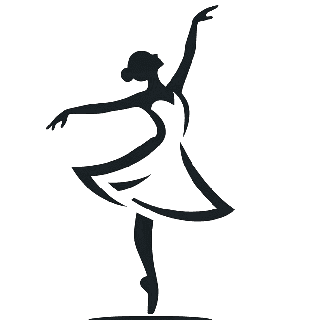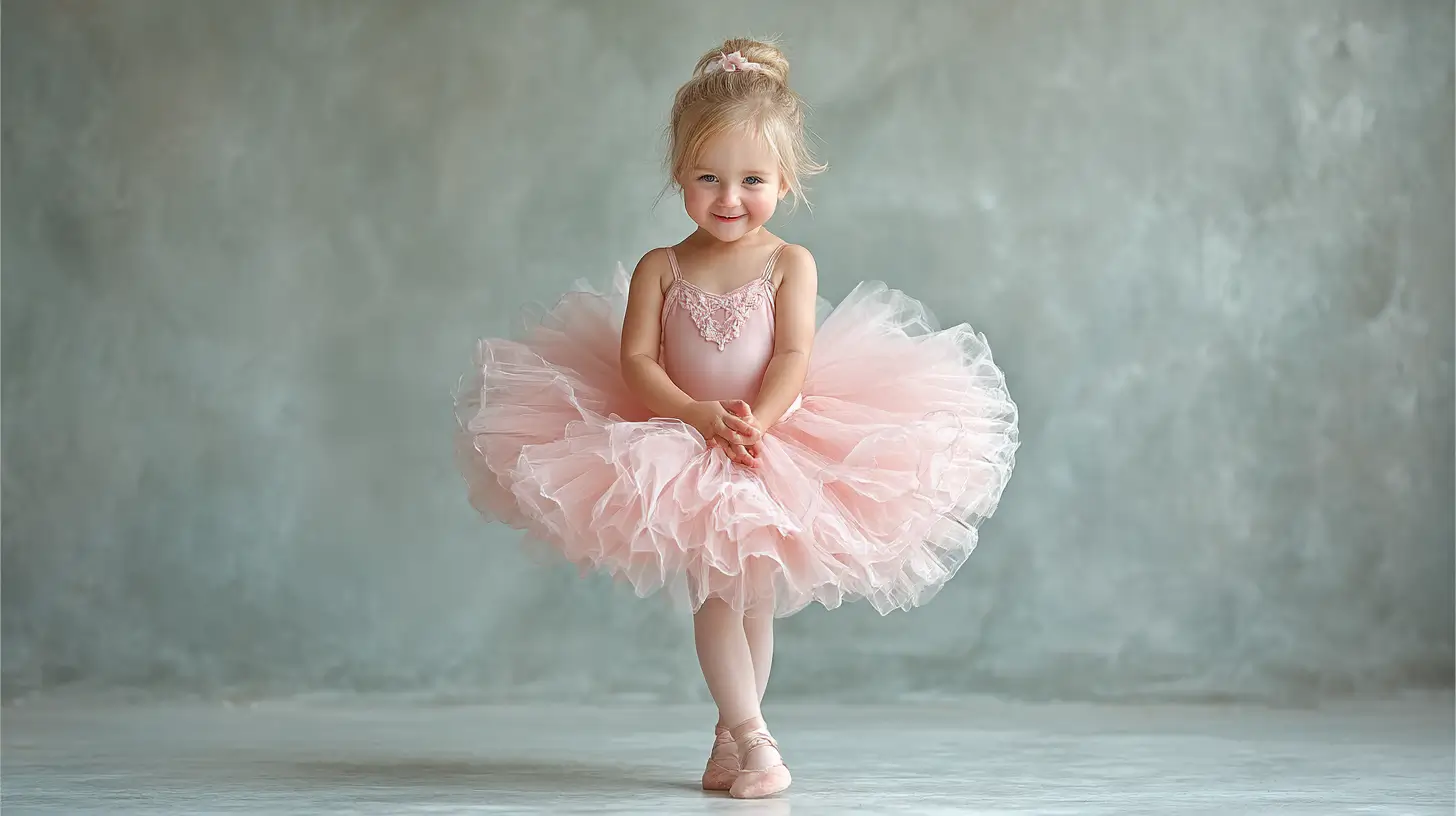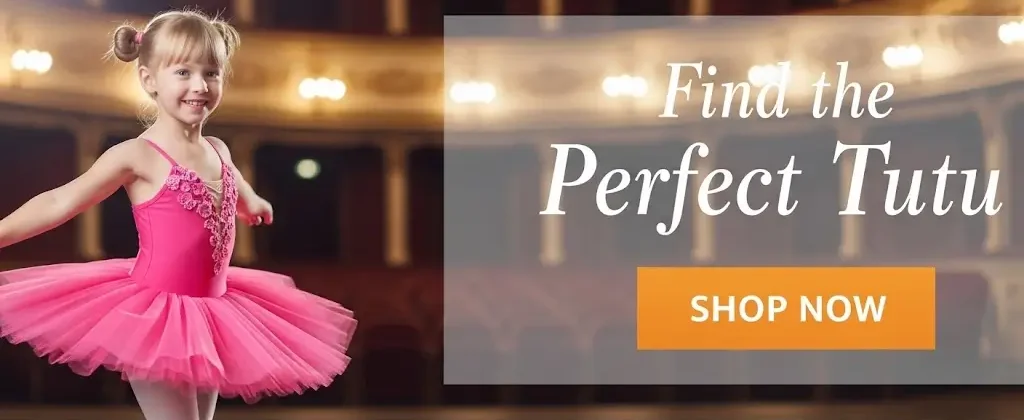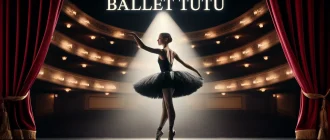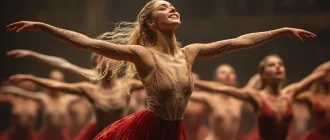A tutu is the iconic skirt worn in ballet to highlight a dancer’s movements, much like the shoes they wear. Originating in the 19th century, tutus come in a variety of styles and materials. This article delves into its history, types, and significance in ballet performances.
Key Takeaways
- A tutu, an iconic ballet garment popularized by Marie Taglioni in the 19th century, has evolved from soft romantic styles to structured classical designs, enhancing the dancer’s movements and performance.
- The two primary types of tutus are classical tutus, which emphasize precise movements through structured designs, and romantic tutus, which allow for flowing movement and a softer aesthetic.
- Tutus can be customized for individual dancers, offering options for unique colors and embellishments. Proper care and storage are essential to maintain their shape and condition.
Ballet Tutus Podcast
Understanding the Tutu
A tutu is a distinctive skirt worn in ballet, typically featuring a fitted bodice and constructed from materials like tulle or silk. This iconic clothing garment is designed not only for its visual appeal but also to complement the dancer’s movements, enhancing the grace and elegance of the performance. The word ‘tutu’ is believed to have originated in the late 19th century, though its exact etymology remains a mystery.
Marie Taglioni, a renowned ballerina, is often credited with popularizing the tutu when she wore it during her performance in ‘La Sylphide’ in 1832. Originating in Paris during the Romantic era, the tutu quickly became the defining costume for ballerinas. Women have played a central role in shaping ballet costume history, with tutus specifically designed to highlight the femininity and artistry of women dancers.
Over the years, innovative designs and adaptations, such as the social-distancing tutu created during the COVID-19 pandemic, have showcased the ongoing evolution of this ballet staple in the dance world.
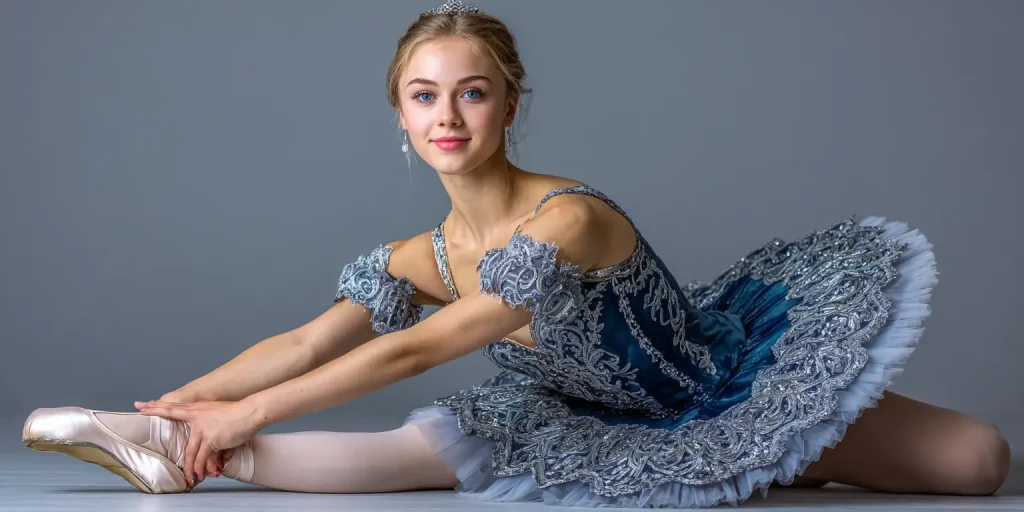
Overview of Ballet Tutus
| Tutu Style | Description | Notable Examples |
|---|---|---|
| Romantic Tutu | A soft, bell-shaped skirt made of several layers of tulle, extending from the knee to the ankle. Introduced in 1832 by Marie Taglioni in La Sylphide, it emphasizes the lightness and grace of the dancer. | La Sylphide, Giselle, Emeralds |
| Classical Tutu | A shorter, stiffer skirt that projects horizontally from the hips, allowing greater visibility of the dancer’s legs and intricate footwork. Variations include: • Pancake: Flat and stiff, supported by a hoop. • Platter: Similar to a pancake but with a flat top layer. • Bell: Shorter layers that fall in a bell shape without hoops. • Powder-puff: Soft, fluffy layers without hoops, allowing more movement. | Swan Lake, The Sleeping Beauty, Don Quixote, Paquita |
| Contemporary Tutu | Modern adaptations that may use unconventional materials or designs, reflecting innovative choreography and aesthetics. These tutus often break traditional norms to suit contemporary performances. | Divergence (Australian Ballet), various Balanchine works |
The tutu remains an iconic symbol of ballet, continually adapting to the evolving art form while preserving its historical significance.
Classical Tutu vs. Romantic Tutu
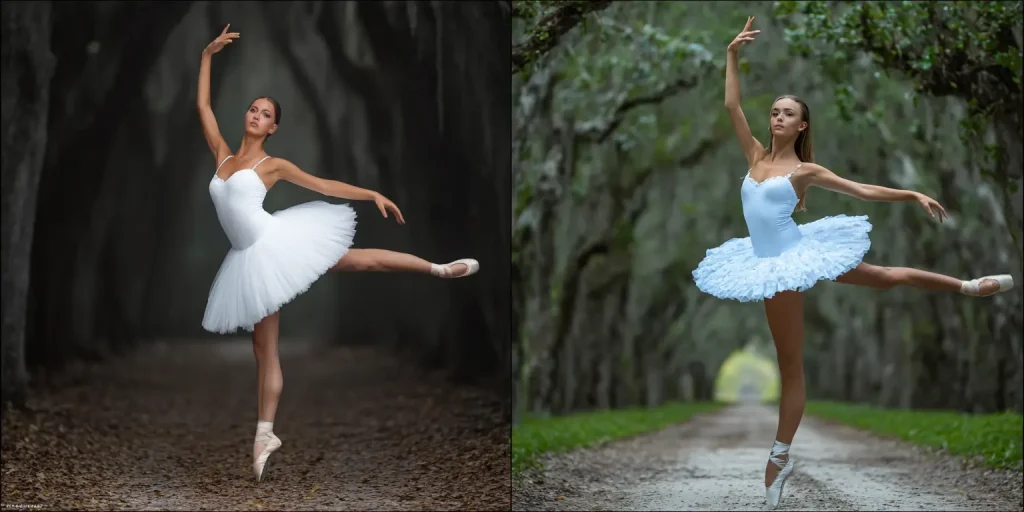
The world of ballet is rich with diverse styles of tutus, each adding a unique flavor to the storytelling aspect of the performance. Classical and romantic tutus are two prominent types, each with distinct characteristics that reflect different themes and eras in ballet. The Ballets Russes, in the early 20th century, challenged traditional designs by creating costumes that were more reflective of the ballet’s themes rather than adhering to form.
Classical tutus, often associated with classical ballet, are known for their structured design and the use of stiff tulle to create a puffed appearance. Classical tutus typically end above the knee, which highlights the dancer’s legs and footwork, while romantic tutus extend down to the ankle, creating a softer, more ethereal look that partially obscures the legs.
In contrast, romantic tutus are softer, longer, and designed to enhance the dancer’s flowing movements. Some tutu styles are a mix of different design elements, such as combining wire hoops and fabric or blending netting and framing to provide both support and shape. Both styles play a crucial role in shaping the visual and emotional impact of a ballet performance.
Features of the Classical Tutu
Classical tutus are designed to enhance a dancer’s precise movements, making every pirouette and jump visible to the audience. Typically, these tutus consist of:
- Around 12 to 16 layers of stiff tulle, which help create their distinctive puffed appearance.
- Layers of tulle that maintain a flat and wide appearance.
- A structured silhouette that projects outward from the hips.
The structured design of the classical tutu allows for a wide range of movement while ensuring that the skirt stays in place during intricate choreography. This type of tutu is essential for classical ballet performances, where precision and clarity of movement are paramount.
Characteristics of the Romantic Tutu
Romantic tutus, in contrast, are designed to be softer and longer, typically reaching the calf or ankle. This design choice enhances their graceful, flowing movement, creating an ethereal and dreamlike quality. Romantic tutus usually feature a bell-like silhouette and are made of 3-5 layers of tulle, providing a soft and ghostly appearance.
This style of tutu allows for graceful, flowing movements, emphasizing the softness and fluidity of the dancer’s performance. The romantic tutu’s design contributes to its ethereal aesthetic quality, which is perfect for ballets that require a more delicate and fluid presentation.
Different Styles of Classical Tutus

The classical tutu comes in various styles, each with its unique attributes that cater to different performance needs. The Pancake tutu, for example, features a skirt that extends horizontally from the hips, created with multiple layers of tulle and net, and includes a wire hoop for support. This style became prominent in the 1930s and 1940s with the addition of fitted bodices and reinforced plates.
The Platter tutu appears to share a resemblance with the pancake tutu. Still, it is positioned at the waist instead of the hip and features a flat top layer, which the company elaborates on to learn more about its product design.
The Bell tutu, on the other hand, has a bell-like shape with stiff layers of netting, allowing the skirt to drape loosely without hoops.
The Powder-puff tutu has the following characteristics:
- It is short and comprises several layers of netting without a wire hoop, resulting in a softer and fuller appearance.
- Barbara Karinska innovated this style in the late 1940s.
- The design allows for greater freedom of movement and a lighter silhouette.
Materials Used in Tutus
Tutus are crafted from a variety of materials, each contributing to the overall look and feel of the garment:
- High-quality tulle: soft, durable, and breathable, making it comfortable for wear.
- Polyester tulle: helps maintain shape and resist wrinkles, ensuring that the tutu looks pristine throughout the performance.
- Nylon tulle: strong and versatile, suitable for various styles.
- Blended tulle: enhances durability and texture, providing creative design options.
Cotton tulle is lightweight and breathable, making it an excellent choice for casual and children’s tutus. The hexagonal mesh structure of tulle affects its opacity, and multiple layers may be necessary to achieve a fully opaque appearance. These materials are carefully selected to ensure that tutus not only look beautiful but also perform well on stage.
The Role of Tutus in Ballet Performances
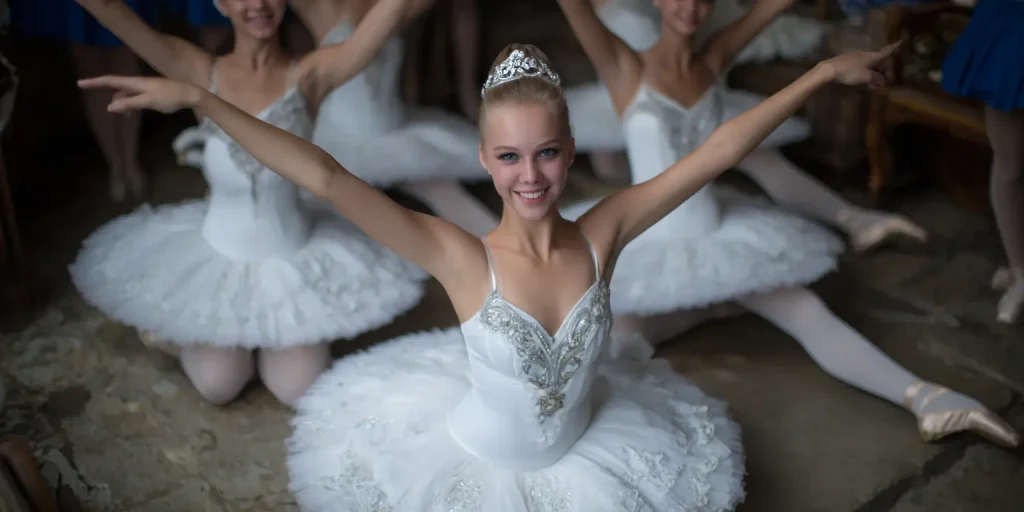
Tutus play a significant role in ballet performances by highlighting a dancer’s footwork and leg techniques, making these movements more visible to the audience. Key aspects of tutus include:
- Classical tutus have a structured design that emphasizes the dancer’s legs and footwork.
- Romantic tutus are crafted for a more flowing and ethereal appearance.
- The layered structure of tutus enables a dramatic presentation when a dancer moves, enhancing the dynamic nature of ballet choreography.
A well-fitted tutu not only boosts a dancer’s confidence but also accentuates their lines and form on stage. Tutus serve as an extension of the dancer, allowing them to convey character and emotion through their movements.
When selecting a tutu, it is essential to consider the choreography to enhance the dancer’s on-stage presence and overall performance. Comfort is also crucial, as it allows for ease of movement during the performance.
Customizing Your Tutu
Personalizing a tutu allows dancers to express their individuality and style on stage. Dancers can choose from various color options beyond traditional pink and white, reflecting their style. Additional embellishments, such as sequins and lace, can be added to custom tutus to enhance the performance’s visual narrative.
Choosing the right style and silhouette in a custom tutu is crucial, as it must complement the dancer’s role and choreography. By customizing their tutus, dancers can create a unique look that enhances their performance and makes a lasting impression on the audience.
The Evolution of Tutus
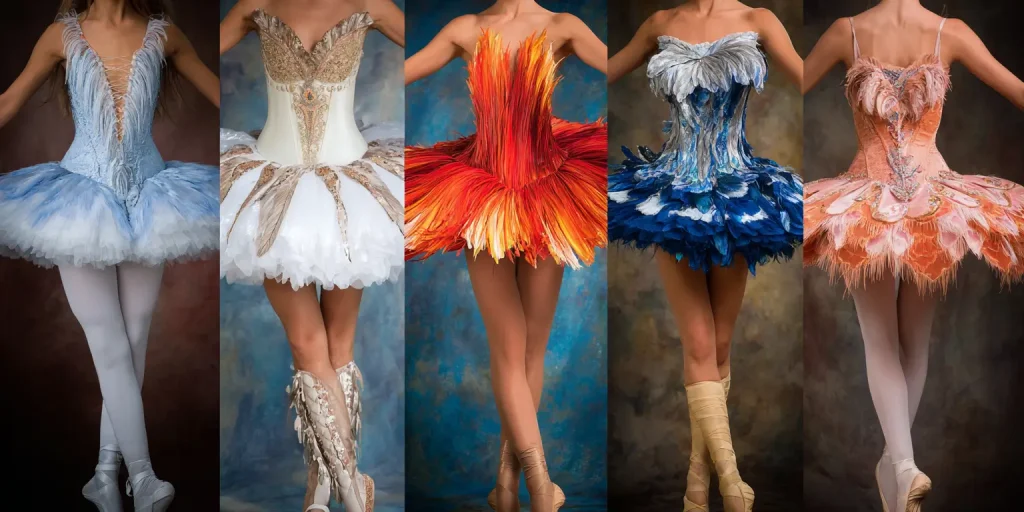
The design of the tutu has evolved significantly from its early Romantic style to the more structured Classical tutu seen today. Initially, tutus were soft and bell-shaped, reflecting the fashion and dance styles of the Romantic era. Over time, they have adapted to various styles and materials, showcasing the creativity of both designers and dancers.
Tutus serve not only as costumes but also symbolize the art and history of ballet, reflecting the evolution of fashion and dance over time. From the soft, flowing skirts of the Romantic period to the stiff, structured designs of the Classical era, tutus have continually evolved to meet the demands of ballet performances.
This evolution highlights the enduring significance of tutus in the world of ballet and their ability to adapt to changing trends and styles, much like the evolution of shoes.
Choosing the Right Tutu for You
Selecting the right tutu is essential for ensuring comfort and freedom of movement for the dancer. Custom tutus can be tailored to fit individual measurements, providing a perfect fit that enhances performance. The ordering process for a custom tutu involves detailed consultations to ensure the design aligns with the dancer’s preferences and performance needs.
Plus-size tutus are also available in various styles, allowing dancers of all body types to express their artistry comfortably. By selecting the right tutu, dancers can ensure they look and feel their best on stage, thereby enhancing their overall performance.
Caring for Your Tutu
Proper care and storage of tutus are essential to maintain their shape and condition. To preserve the shape of a tutu, consider the following tips:
- Store the tutu flat whenever possible, rather than folded.
- Store tutus upside down to help keep the ruffles in good condition and prevent them from losing their volume.
- Use a tutu bag to protect the garment from dust and moisture and to help keep it properly positioned.
When stacking tutus in a bag, consider the following tips:
- Place heavier tutus at the bottom to prevent damage to lighter tutus stored above.
- Avoid placing any objects on top of the tutu during storage to prevent permanent creases and loss of ruffled shape.
- Add a desiccant pack in storage to help absorb moisture, which is crucial for preserving the tutu’s fabric.
Where to Buy Tutus
There are several reputable places to purchase tutus, both online and offline. Amazon offers a wide variety of tutus, including layered options, at reasonable prices, with many products highly rated by users. Online retailers like Etsy provide unique, handmade tutu designs, making it a good source for customized ballet skirts.
Discount Dance Supply specializes in dancewear and offers a range of tutus for both children and adults, with a focus on quality and performance. Brands like Bloch and Capezio are renowned for producing high-quality tutus favored by professional dancers, available through specialty dance retailers.
Tutu.com is an online store dedicated to tutus, offering a diverse range of styles tailored to various performance needs and preferences. Selecting a reputable company retailer for your tutu is essential to ensure quality and satisfaction.
The Artistry of Tutu Makers

Behind every breathtaking ballet performance is the meticulous work of tutu makers—skilled artisans whose craft brings the vision of classical ballet to life. Creating a tutu is both an art and a science, blending tradition with innovation to design costumes that not only look stunning on stage but also support the dancer’s movements.
The process begins with a deep understanding of the ballet’s story, the character’s personality, and the specific style required—be it a classical tutu with its iconic flat, stiff tulle skirt, a romantic tutu with a softer, flowing silhouette, or specialized designs like the pancake tutu or platter tutu. Each style demands a unique approach, from the number of layers of tulle or net to the method of attaching the skirt to the basque or waistband. The choice of materials, color, and embellishments is carefully considered to enhance the overall appearance and complement the choreography.
Tutu makers work closely with dancers and ballet companies, often in renowned hubs such as Paris and New York, to ensure that each tutu is tailored to the dancer’s measurements and the production’s aesthetic. The design phase involves sketching, selecting fabrics, and planning the construction, while the making phase requires precise cutting, layering, and stitching—sometimes by hand, sometimes by machine. The result is a product that must withstand the rigors of rehearsal and performance, all while maintaining its shape and beauty under stage lights.
The price of a tutu reflects the complexity of its design, the quality of materials, and the hours of labor involved. A simple practice skirt might be relatively affordable. Still, a custom, stage-ready classical tutu—complete with several layers of stiff tulle, intricate decorations, and a perfectly fitted basque—can command a premium price. The time required to create such a piece can range from a few days to several weeks, depending on the level of detail and customization.
What sets tutu makers apart is their ability to blend function with artistry. Every decision, from the placement of each layer to the choice of color and trim, is made with the dancer’s comfort and the performance’s visual impact in mind. The tutu must move with the dancer, accentuating every leap and turn, while also contributing to the magical world created on stage.
The global community of tutu makers is a vibrant one, with artisans sharing techniques, discovering new materials, and continually refining their craft. Whether working for a major ballet company or as an independent designer, these creators are united by a passion for ballet and a commitment to excellence.
In the end, a well-made tutu is more than just a piece of clothing—it’s a work of art that elevates the entire performance. The artistry of tutu makers ensures that each skirt, whether short and flat or long and romantic, becomes an essential part of the ballet’s storytelling, helping dancers and audiences alike discover the enduring magic of the stage.
Resume
Tutus are much more than just dance costumes; they are integral to the art of ballet, enhancing the visual and emotional impact of performances. From the structured classical tutus to the flowing romantic tutus, each style serves a specific purpose in bringing ballet stories to life. The choice of materials, the role of tutus in performances, and the ability to customize and care for them are all crucial aspects that contribute to their significance.
Whether you are a dancer seeking the perfect tutu or someone fascinated by the world of ballet, understanding the history, evolution, and practical aspects of tutus can deepen your appreciation for this iconic garment. By selecting the right tutu and maintaining it properly, dancers can ensure that they continue to captivate audiences with their grace and elegance.
Frequently Asked Questions
What materials are commonly used to make tutus?
Tutus are primarily composed of different types of tulle, including polyester, nylon, and cotton, which offer various advantages in terms of durability, comfort, and aesthetics. Choosing the right tulle can enhance the overall quality and look of the tutu.
How do classical and romantic tutus differ in design?
Classical tutus feature a structured design with multiple layers of stiff tulle for a puffed appearance. In contrast, romantic tutus are characterized by their softer, longer design that provides a flowing, ethereal look.
What are some popular places to buy tutus?
You can find a variety of tutus at popular retailers such as Amazon, Etsy, Discount Dance Supply, Bloch, Capezio, and Tutu.com, all of which offer a range of styles and customization options.
How should I care for my tutu to maintain its shape?
To maintain the shape of your tutu, store it flat or upside down in a tutu bag, ensuring that heavier tutus are stacked at the bottom and avoiding objects on top. Additionally, consider adding a desiccant pack to absorb moisture.
Why are tutus important in ballet performances?
Tutus are essential in ballet performances as they accentuate the dancer’s movements, showcase footwork and leg techniques, and enhance the visual and emotional impact of the choreography.
What is tutu slang for?
Tutu is slang for money, and it is believed to be borrowed from the French word “tutu,” which is an alteration of “cul,” meaning buttocks.
What is the English name for tutu?
The English word names for girls, women, or ballerinas dressed in short skirts are used for girls wearing full or tutu skirts. Women wear shorts and full skirts, often paired with skirts made of several layers of tarlatan or tulle, which ballerinas also wear.
What is the difference between tutu and tulle?
The main difference between tutu skirts and tulle is that tutu skirts are made from tulle, a specific type of thin, net-like fabric. Several layers are required to create a skirt of any substance. Tulle material comes in different kinds, some of which are soft and fold in airy and gentle waves, while others are stiff.
How is a tutu made?
Tutus are made by layering multiple tiers of tulle or netting, ranging from around 12 to 16 layers, depending on the desired fullness.
What are the types of tutus?
The two basic types of modern tutus are the Romantic and Classical styles. These are the main categories of tutus used in ballet costumes.
What does ” tutu ” mean, and where does it come from?
The term most likely evolved from 19th‑century backstage slang in Paris: “tutu” sprang from the childish French ”cucu,” itself a playful reduplication of ”cul‑cul,” meaning “bottom.”
Who first wore a tutu on stage, and why was it revolutionary?
Marie Taglioni introduced the prototype Romantic tutu in 1832 for La Sylphide, shortening the skirt to reveal her pointe work and permanently changing ballet silhouette standards.
What is the difference between a Romantic tutu and a Classical tutu?
A Romantic tutu is soft and calf‑length, creating an airy “bell” around the legs, while a Classical tutu is short, stiff, and projects horizontally from the hips to showcase precise footwork.
Which main styles make up the Classical tutu family?
Classical skirts appear in four core cuts—Pancake, Platter, Bell, and Powder‑puff—each distinguished by how flat, domed, or fluffy its tulle plate looks on stage.
What materials are tutus made of today?
Modern tutus combine stiff net or tulle (often made from nylon, polyester, or English net) for the skirt with lightweight muslin, satin, or stretch mesh for the bodice; specialty nets range from medium to extra-rigid weights for touring durability.
How many layers does a professional tutu usually have?
A performance‑grade Classical tutu typically carries seven to twelve layers of net; practice variants often use seven layers to balance stiffness and ease of partnering.
How long does it take to construct a high‑quality tutu?
Experienced costume makers report sixteen to thirty working hours for the skirt alone, while full costumes with bodice and decoration can span three forty‑hour workweeks.
Why do some Classical tutus include a wire hoop?
A spring-steel or plastic-coated hoop threaded through the middle layers keeps the plate perfectly horizontal, prevents drooping, and allows for secure handholds during lifts.
What is “tacking,” and why is it important?
Tacking stitches discreetly bind the layers together, allowing the skirt to move as one unit and control bounce, thereby preserving the tutu’s crisp geometry throughout turns and jumps.
How should a tutu be stored to maintain its shape?
Lay it flat on a wide, breathable shelf or suspend it upside‑down by the panty on a padded hanger; avoid tight garment bags that crush the net.
Can a tutu be machine‑washed?
Delicate hand washing is safest; some unboned skirts can tolerate a gentle-cycle wash inside a mesh bag, but bodices with boning or heavy embellishment should never be put in a machine.
What distinguishes a practice tutu from a performance tutu?
Practice tutus favor fewer layers, minimal decoration, and durable net so dancers can rehearse partnering without snagging beads. Performance tutus, on the other hand, add elaborate trims, stones, and dye work for stage lighting.
Are tutus exclusive to ballet dancers?
No—ice skaters, rhythmic gymnasts, drag performers, and fashion designers regularly reinterpret the tutu silhouette for competition, stage, and red‑carpet looks.
How has the tutu influenced contemporary fashion?
Recent runway seasons have shown leather tutus at JW Anderson, deconstructed layers at Simone Rocha, and adult‑sized tulle skirts styled with tees—proof that “balletcore” permeates high fashion and streetwear alike.
How much does a professional tutu cost?
Ready‑made professional tutus retail from about $190 for economy designs to well over $850 for hand‑beaded, competition‑grade costumes—custom commissions often exceed four figures.
